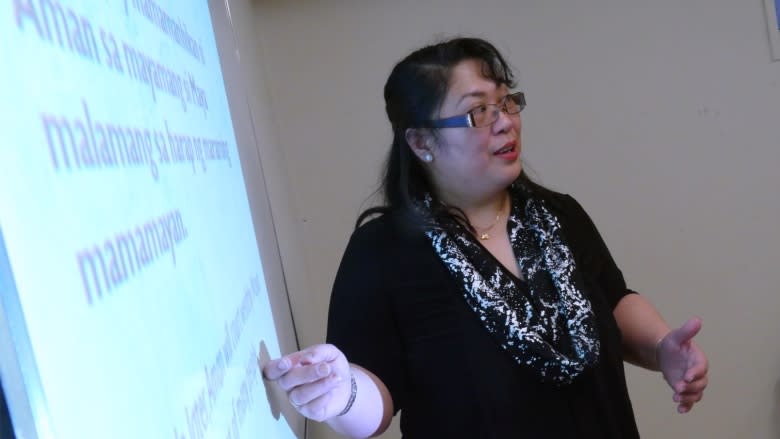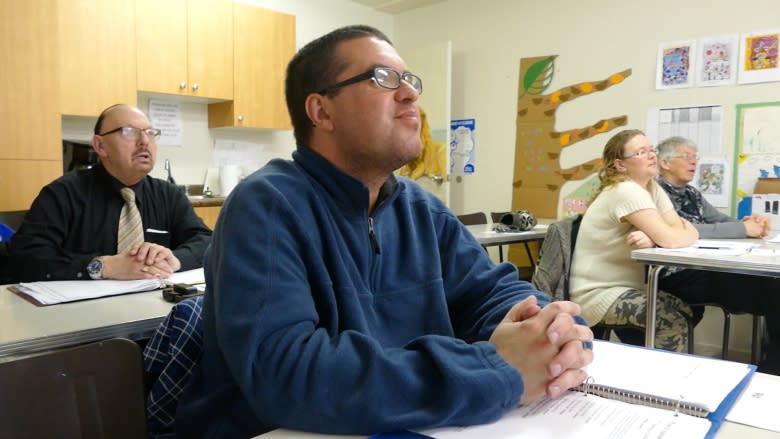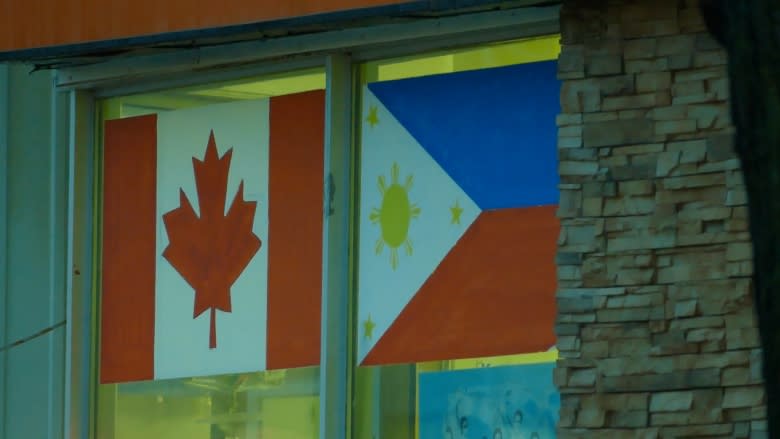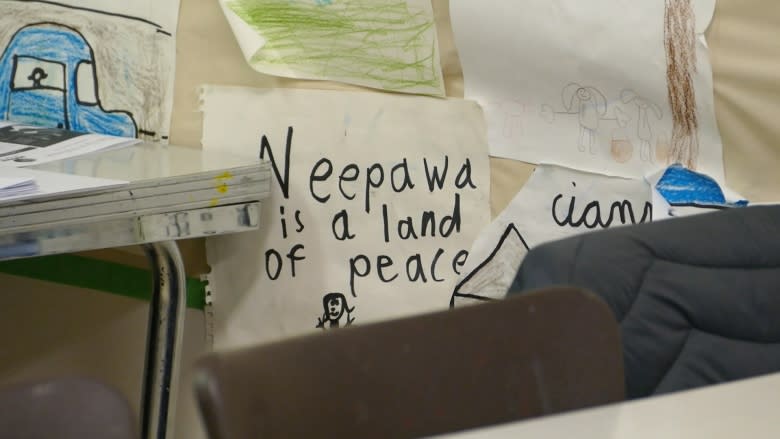Neepawa residents embrace newcomer culture with new conversational Tagalog class
It's Friendly Manitoba, but Neepawa residents are going the extra mile: learning the language of their new neighbours to help them feel more welcome.
Tagalog classes are proving to be a hit among native English speakers in the western Manitoba community.
Neepawa's population has swelled with newcomers, mainly from the Philippines, in recent years. Many have come to work at the town's pork processing plant and have since brought their families.
"You see the joy in their faces when you reply in their language," said John Drinkwater, one of the students in the 10-week class, a first in the town of about 4,000 people located 170 kilometres northwest of Winnipeg along the Yellowhead highway.
Drinkwater, a local newspaper reporter, wanted to learn Tagalog because a number of people in his church, and around town, speak the language.
The town's population jumped by nearly 27 per cent between 2011 and 2016, according to census data released in February. An Asian grocery store and a number of other businesses geared towards the Filipino community have opened in recent years.
"I just wanted to be able to converse with them in a normal, friendly matter," he said.
Interest level wows instructor
Class instructor Myla Ignacio moved to Neepawa from the Philippines in 2013, along with her two kids, to join her husband. She said she was first approached with the idea of teaching a Tagalog class more than two years ago, but she wasn't sure if people would be interested.
Last December, she and Arts Forward — the town's art centre — decided to give it a try.
When the class of 10 grew to 12 after it started in January, she could hardly contain her excitement.
"Knowing that they want to know our language is just simply great," she said. "My feeling was ... excited, happy, everything."
"The town of Neeapwa is very welcoming for us Filipinos and of course other newcomers," Ignacio, who works at the town's settlement office, added. "They have totally embraced us."
Grocery shopping in Tagalog
The class, a mixture of everyday people from all walks of life, meets once per week and started with a lesson about the Filipino culture, people, food and even the climate before moving into basic greetings and phrases.
"I want them to really embrace what it is in the Philippines and ... have a background knowledge of that," she said, adding that around eight people on average come to class weekly.
Last Thursday, when CBC visited the class, only five students were in attendance. Pouring rain and a major fundraiser at another venue in town likely kept some away, Ignacio said. That evening, the class started by reciting Filipino tongue twisters.
Ignacio then moved into a lesson about navigating a grocery store in Tagalog.
"When you're shopping, they're amazed when you've made a purchase and you acknowledge them [in Tagalog]," Drinkwater said.
Colin Whelan learned a small amount of Tagalog from his coworkers at the Sand Hills Casino near Carberry, but joined the class to learn more. He hopes to one day be fluent enough to carry a conversation.
"It's getting close," he said. "But it's a little tough. I know certain words ... quite a few words and phrases."
"I think it's exciting to be able to converse," he added. "It's fun learning a new language."
And it seems the class' new language skills are already being used around town.
"When they hear somebody say 'mahal kita', I love you, or 'salamat', thank you, they're just really happy," Ignacio said. "Their face is just 'wow they're able to do that in our own language.'"
Second class in works
The program wraps up at the end of March with a cooking class, completely in Tagalog. More interest has led to Ignacio now starting a second class at the beginning of April.
It's just one more thing that brings the community together and makes the newcomers feel more at home, according to Ignacio.
"They became our extended family," she said of Neepawa's residents. "And we became close to them."






